| 1 | The Caribbean’s longest snake |
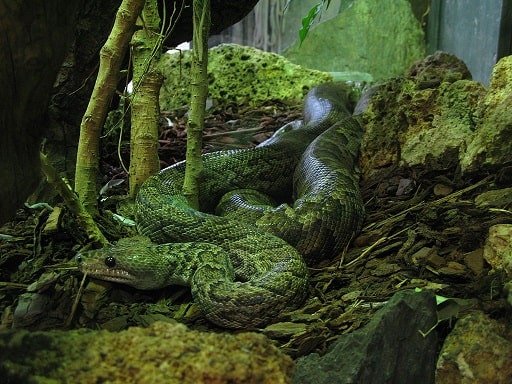
The Cuban boa is exactly what it sounds like: a boa species found all over the island of Cuba. Like other boas, it’s a hefty constrictor which derives the majority of its prey from mammals. It’s the sole boa found on the island of Cuba, and is rarer than it used to be, but still reasonably common. The Cuban boa belongs to the 14-member Chilabothrus genus, which are collectively dubbed the Caribbean boas, and spread across the various different islands.
More importantly, there’s one area where this species really stands out – its legendary brute size.
Cuban boas are the largest boa found in the Caribbean, and before modern times, they may have been one of the largest snakes in the world. Early colonists called them “as stout as a man’s thigh and as long as twenty-five or thirty feet (7.62–9.14 m)”. Tales of monstrous brutes continued to pop up well into recent history, as Rodriguez (1876) mentioned a Cuban boa measuring 5.49 metres. Gundlach (1875, 1880) reported an individual measuring 6.4 metres, which is the longest officially reported Cuban boa ever, while also mentioning a 4.57 metre boa he was keeping.
These days, 8 metre brutes are a thing of the past, if they ever happened. It’s believed that fearful villagers have slowly wiped out the largest ones, preventing them passing on their genetics for extreme size.
Nevertheless, huge Cuban boas have still appeared in modern times, such as a 485.1cm female which was run over at Guantanamo naval base in 1987, and officially verified by scientists. This is significantly longer than the record boa constrictor, at 4.3 metres (a 5.6 metre constrictor turned out to be a green anaconda). Since then, several Cuban boas of 3.9 metres have been measured at Guantanamo.
| 2 | A top bat-munching snake |
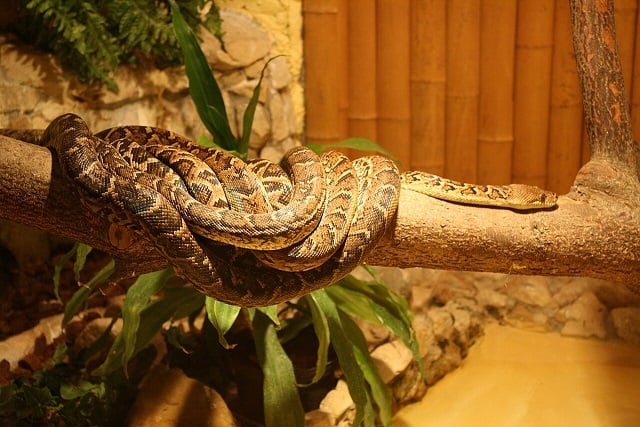
Cuban boas are not just huge, but hold a record as one of the most heavily bat-eating snakes. In one study, bats accounted for 11.9% of their prey, and 22.8% in areas with no human influence. They grab their bat meals in complete darkness, usually entering ambush position 30-60 minutes after sunset. On some nights, they have two separate hunting sessions, one immediately after sunset and another before sunrise.
Cuban boas carefully position themselves outside cave entrances, where bat colonies roost during the day, but can use two strategies. The first is waiting on the ground, disguised by rocks or vegetation, and raising one third of their body into the air. This is normally used for caves with a lower entrance.
The second is to slither up a cold cave wall and dangle from a stalactite, gripping themselves in place with their muscular boa tail. They can also dangle from overhanging vegetation, or somehow, from the jagged cave entrance itself. Then it’s go time. As the bat colony assembles, and flies out for the night in a cacophony of flapping wings, the Cuban boa performs the most ingenious hunting trick ever devised: it opens its mouth.
| 3 | Dangles itself into bat swarms |
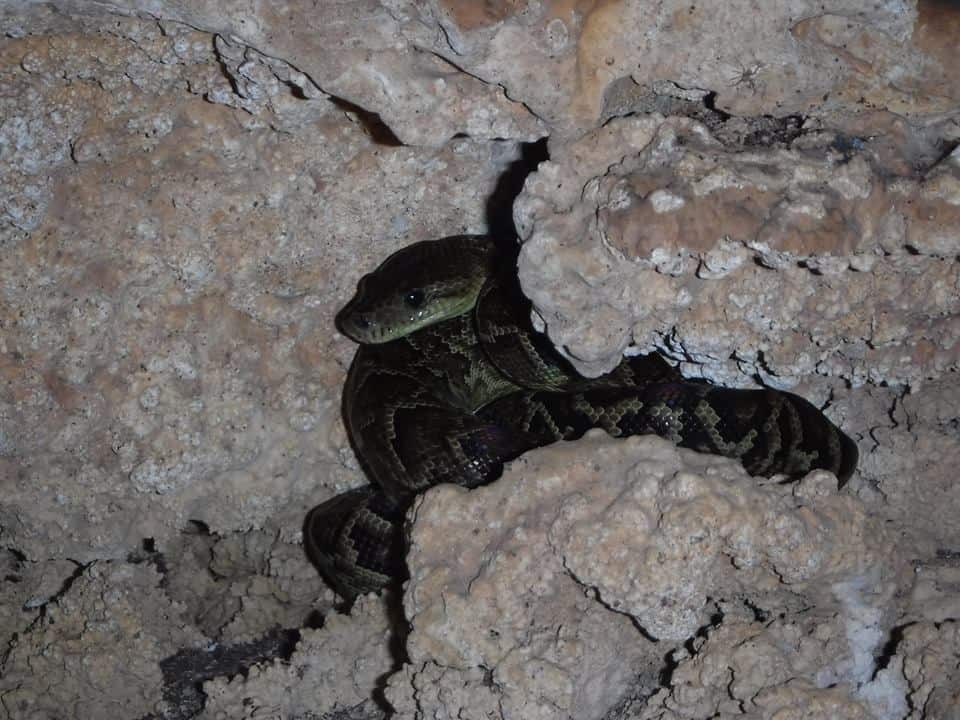
The Cuban boa isn’t the smartest hunter, as they’re unable to anticipate the actual paths of bats. They never react until a flapping bat makes contact with their scales, but this contact activates an instant grab manoeuvre. The Cuban boa then wraps around its prize with one or two coils, and swallows the bat while still dangling.
With hundreds per bat colony, it’s virtually impossible for the hanging Cuban boa to not be struck by one. One study followed 9 Cuban boas in a sinkhole cave. Over 8 days, each snake succeeded in capturing at least 1 bat. Scientists also found a hot cave in Sierra del Rosaria in western Cuba, which had a tiny entrance. Here, the exiting bat colony was so dense that the Cuban boas caught them simply by opening their mouths.
The only obstacle they have to contend with is gravity. Dangling for too long can disrupt a Cuban boa’s blood circulation, just as it would with a human’s head. They’ve also been spotted grabbing two bats at once.
| 4 | The first pack-hunting snake |
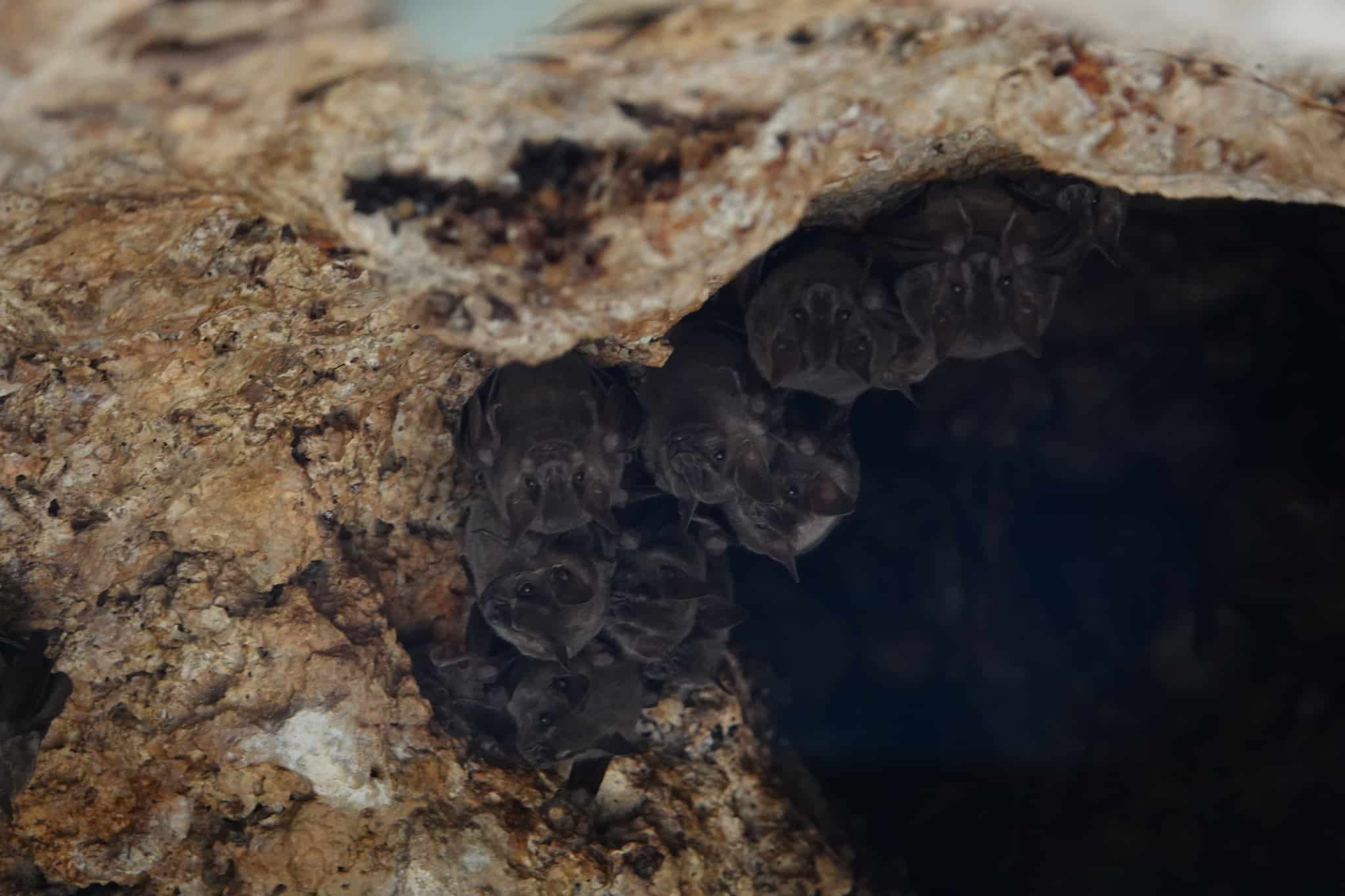
Cuban boas are confirmed to eat numerous species, including Cuban fruit-eating bats, fruit flower bats, buffy flower bats, Antillean ghost-faced bats, and Jamaican fruit-eating bats. The latter is their favourite, according to a 2020 study.
Within their humid bat caves, you can sometimes find 30 Cuban boas relaxing together at once. Scientists assumed that they were all flocking to the same food source, but a 2017 study revealed that they were actually cooperating. In a new, bone-chilling development for the human race, the Cuban boa was dubbed the first snake species to hunt in packs.
The scientists found that when dangling from cave ceilings, Cuban boas were more likely to choose spots close to other boas. They often formed a straight line together, fencing off the entrance, and vastly increasing the chances that tasty bats would fly into their clutches. The lone, non-cooperative boas were significantly more likely to fail. In 2016, BBC’s Planet Earth II terrified viewers after showing footage of a gang of snakes cornering one iguana, but in reality, it was separate snakes flocking to the same tasty meal (which miraculously escaped). Now, the nightmare was all too real.
| 5 | Top prey: the hutia |
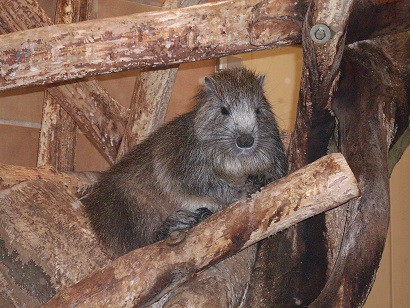
As thy age, Cuban boas grow out of their bat phase. Few snakes over 2 metres eat them, mainly because bats have large tails and wing membranes, which contribute too much energy-inefficient gristle and too little meat. The favourite prey of adult Cuban boas is the hutia, a Caribbean mammal family which resembles a hairy rat-squirrel hybrid. Most hutia species live on Cuba and Hispaniola, and the Cuban boa’s favourite is Demerest’s hutia, the most common species in Cuba. This is colloquially called the banana rat, and locals love to brew them in a stew with nuts and honey.
The study above found that without human presence, hutias made up 33.3% of the Cuban boa’s diet. Demerest’s hutia was the single most eaten species. Another species is the black-tailed hutia, but this is restricted to eastern Cuba, and then to treetops.
Cuban boas are the Demerest’s hutia’s top predator on the whole island, their absolute nemesis. They’ve been recorded swallowing multiple hutias at once, and a Spanish report from 1851 claimed that 6-7 hutias were commonly found in a single boa belly.
| 6 | Won’t say no to chicken |
Cuban boas are a forest-loving species, and widespread deforestation has pushed them into ever closer contact with humanity. One group has paid the price above all, and that’s chicken farmers. Near human settlements, the Cuban boa can get 50% of its prey from the domestic chicken. Cuban boas can be large enough to swallow a mother hen and 8 small chicks at once.
Near human settlements, Cuban boas always hunt at night, and enraged farmers often wake up to find their flock completely destroyed. Chickens often fly up to trees to roost, and Cuban boas are even capable of slithering up branches and grabbing them. They have a particular taste for chickens, as the helmeted guineafowl is just as abundant on many Cuban farms, yet hunted far less. It seems that we and the Cuban boa have something in common.
Nevertheless, the humble chicken doesn’t roll over and accept their fate. They let out loud alarm calls whenever a Cuban boa approaches, which farmers have learnt to listen out for.
| 7 | The dangers of bird cages |
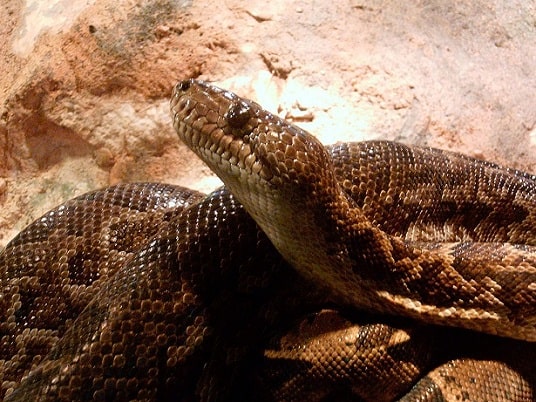
Other Cuban species are aware of this giant boa as well. Near Guantanamo bay, a gang of iguanas spotted a Cuban boa, ran over, and started bashing the snake and nipping at its tail. They successfully drove the snake off, proving that overwhelming size isn’t everything. They also get comeuppance in the form of a jail cell, as Cuban boas commonly slither between bars of chickens’ cages, swallow the chicken, and forget how to escape again.
Sometimes, the dimwitted boa constricts a large chicken, before realising that its mouth won’t open wide enough to swallow it. Farmers commonly find dead chickens covered in a snaky slime, and have even invented a word for the phenomenon: chupados (“sucked”).
Forest cover in Cuba fell from 89% in 1812 to just 14% in 1959, although it has recently recovered to 31% in 2019. Consequently, the Cuban boa is less common than it was, though they’re still ranked as “least concern” by IUCN.
| 8 | Diverged 20 million years ago |
Evidence suggests that the Cuban boa diverged from other West Indian boas 16.9-26 million years ago. Its fellow Chilabothrus members aren’t close to as long; the Jamaican boa had a record length of 2.8 metres, and the Hispaniola boa 2.5 metres. Cuban boas are the only member on the island, and it’s theorised that their extreme size is why, as it prevented other boas from even gaining a foothold. Cuban boas are also the only family member (of 14) to have heat-sensing labial pits in their face, which grant them infrared vision at night (Chilabothrus translates to “without pits”).
Cuban boas can be extremely long lived, reaching 30 years in the wild. In captivity, Cuban boas have even reproduced at over 30 years. The species lays 2-22 young, and a large female can produce over 100 young over her lifetime.
In captivity, Cuban snake are nippy when young, but calm as adults. Males and females have been spotted breeding inside hollow logs, and deep within bat caves. Males apparently dogpile females, as 8 were once spotted trying to mate with a single female in a mad rush.
| 9 | Prefers forest, but flexible |
Cuban boas are fairly consistent in colour, but there’s geographical differences on each side of Cuba. The western versions are faded, with duller colours which are less sharply contrasting, and smaller dark patches. In the east, the colours are vivider, the colours richer, and the angles sharper. This may be connected to eastern Cuba’s climate, which has torrential rainfall all year round. Another difference is that northern Cuban boas are browner, while southern versions are greyer.
While Cuban boas prefer forests, including rainforest, coastal scrub and cloud forests, they’re not completely averse to grassland, and also appear in sugar plantations. They’re mainly ground-dwelling snakes, but Cuban boas are excellent tree climbers, allowing them to seize roosting birds. They’ve been spotted 9.2 metres high before, and have been scooped out of military bunkers at Guantanamo Bay Naval Base (operated by the US).
In 1995, there was a severe earthquake in Cuba and Haiti. Guantanamo Bay accepted thousands of refuges, and a swathe of Cuban boa habitat was bulldozed for housing. This triggered an interesting reaction – a huge surge in the local hutia population.
| 10 | The gigantism debate |
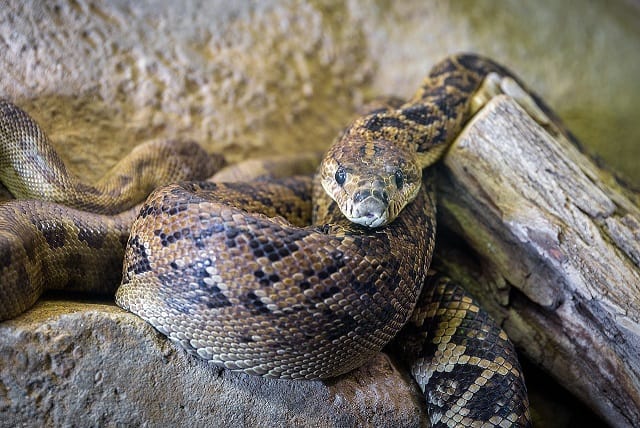
There are two camps when to comes to the Cuban boa’s supposedly giant size. The first argues that they were never 8 metres long, that their length was exaggerated by old colonist reports, scrawled in logbooks in a mesmerised state of wonder at the New World. The other camp argues that there’s precedent for formerly giant animals shrinking when humans arrive. The nearby Cuban crocodile is an example. These days, they average at 3.5 metres long, but records from the 1900s list them as being 5 metres. Recent fossils from the Quaternary period were typically 6 metres long, meaning that the Cuban crocodiles have shrunk by 17-42% since the country was heavily developed.
Among snakes, the Japanese mamushi has been proven to be significantly shorter in areas with heavy hunting versus those without. The large ones are easier to spot, and therefore kill. Fossils have been discovered in Cuba of a 1.1 metre high owl called Ornimegalonyx oteroi, and islands have a history of normal species growing unnaturally large.
